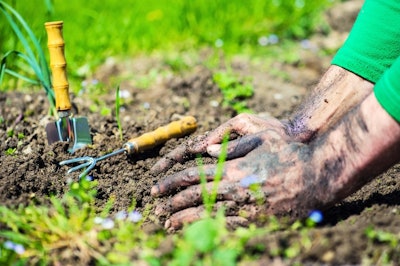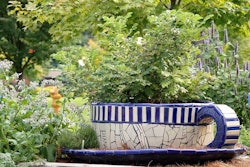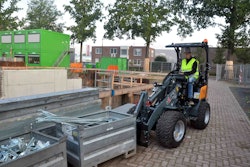
For spring and early summer bloomers, this is the best time of year to start dividing so they are able to devote their energy into developing roots and leaves. For late summer and autumn bloomers, dividing should occur in the spring.
There are three main benefits to diving perennials. First of all, it controls the size of the plant. Some perennials can be aggressive growers and will eventually begin to overpower other plants in the flower bed.
Secondly, it increases the number of plants. If your customer has a particular perennial they favor, dividing it up is a cheap and easy way to spread the love and propagate the plant.
Lastly, it rejuvenates the plant. When plants become overcrowded, they become more susceptible to diseases. Dividing the plants gives them more space to grow and helps encourage good health.
Techniques to use
Before you begin dividing up perennials, it’s important to ensure that the soil is moist beforehand, and thoroughly water the area a day or two before if the soil is dry. Cloudy, overcast days are the best days to divide the plants, as hotter, sunnier days will dry the plants out.
Prune the stems and foliage back to 6 to 8 inches from the ground to ease the division, and dig 4 to 6 inches away from the parent plant. Dig deep enough to unearth the whole clump, and shake the loose soil off to get a better view of the root ball.
Depending on the root type of the perennial, the way they will need to be divided will vary slightly.
For plants with spreading root systems that don’t have a particular pattern, they can usually be pulled apart by hand. For larger plants with roots that are thickly intertwined, roots can be separated with either a hand saw or digging forks. The two forks should be placed in the center of the plant and then the pieces should be pulled apart.
Clumping root systems, like those found in daylilies, that originate from a central clump can be divided with either a garden spade or a sharp knife, and a developing bud should be kept with each division.
Every one to three years as the older ones die off, rhizomes should be divided. Sections of the rhizomes that are dead or damaged should be cut off and discarded. These divisions should result in two to four divisions per plant, and the older and weaker portions should be discarded.
Once the perennials are placed in their new home, they should be watered well and kept in the shade if it looks like hot weather is on the horizon. Cool temperatures and moisture helps plants recover from being divided and moved.
Perennials to leave alone
There are many perennials that will benefit from this spring or fall split, but there are also others that don’t take too kindly to being divided.
Columbine, anemone, gas plant, bugbane, monkshood, false indigo, baby’s breath, butterfly weed, peonies and hostas are all perennials that prefer to just be left alone. Many of these plants send down deep tap roots that keep them anchored, which makes them more trouble that the others to move.
Peonies and hostas don’t need to be divided, but they can adjust to their new surroundings if the need should arise to make more of them. Peonies may not bloom the following year after being transplanted, as they will need more time to adjust.










